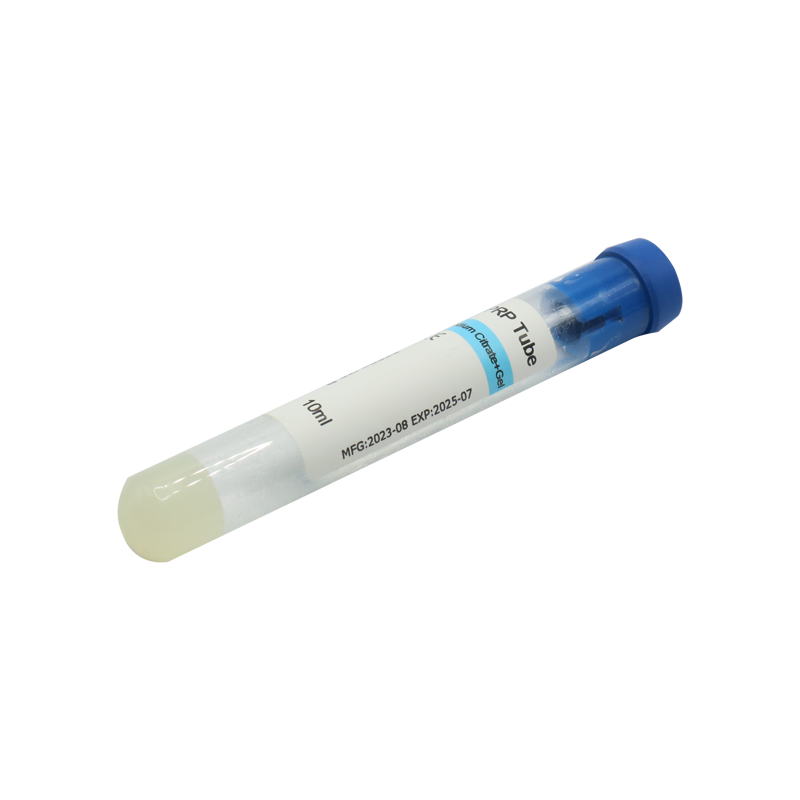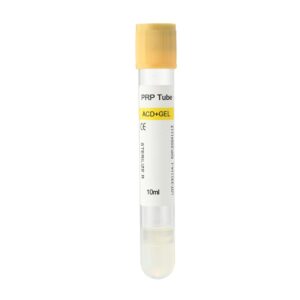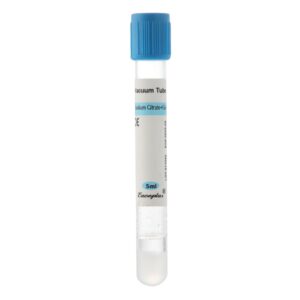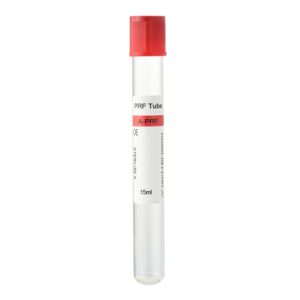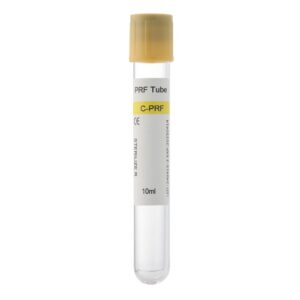Sodium Citrate Gel PRP (Platelet-Rich Plasma) is a medical technique that uses the regenerative properties of platelets in the blood to promote tissue healing and regeneration. It involves extracting the patient’s blood, which is then centrifuged to concentrate platelets. This technique has wide applications in various medical fields, including dermatology, dentistry, and orthopaedics. As PRP technology has advanced in recent years, its use in clinical treatments has expanded, showing remarkable benefits for wound healing, sports injuries, and arthritis treatment.
The success of PRP extraction relies not only on effective centrifugation technology but also on the quality and functionality of the blood collection tubes used. Among the many PRP separation tubes, the Sodium Citrate+Gel PRP tube stands out due to its unique composition and efficiency, making it an essential tool in medical practice.
Components and Function of Sodium Citrate+Gel PRP Tubes
- Sodium Citrate – The Anticoagulant Component: Sodium Citrate is one of the key ingredients in PRP tubes, acting as an anticoagulant to prevent blood from clotting during collection. It works by binding to calcium ions in the blood, which are necessary for the clotting process. By inhibiting clot formation, sodium citrate ensures that blood remains liquid throughout the collection and centrifugation process. This helps maintain the accuracy of the separation and minimizes any interference from clotting factors. Compared to other anticoagulants, sodium citrate is a safe and effective choice that does not negatively affect platelet activity, which is critical for high-quality PRP production.
- Gel – The Separation Layer: Gel plays a critical role in the PRP tube by creating a barrier during centrifugation. It forms a physical layer that separates the different components of blood, such as red blood cells, white blood cells, and plasma. The gel layer prevents cross-contamination of platelets with other blood components, ensuring that healthcare providers obtain only a highly concentrated and purified platelet-rich plasma. This separation technique enhances the quality of PRP, providing a high yield of platelets essential for successful therapeutic outcomes.
Advantages of Sodium Citrate+Gel PRP Tubes
- Efficient Platelet Separation: The effectiveness of PRP treatment depends on the concentration and activity of platelets. The Sodium Citrate+Gel PRP tube efficiently concentrates and separates platelets during centrifugation. The combination of sodium citrate’s anticoagulant effect and the gel’s separation capabilities ensures that platelet concentration is accurate and that the PRP is high purity. This leads to more effective treatments for a variety of conditions.
- Prevention of Clotting Interference: Clotting during the blood collection or separation process can severely impact the quality of PRP. Sodium citrate effectively prevents this, ensuring the blood remains liquid, essential for properly separating platelets. This minimizes any potential interference from coagulation factors, ensuring that the PRP obtained is of the highest quality.
- Maintains Platelet Quality and Activity: The PRP tube with sodium citrate and gel ensures that platelet activity is preserved during the entire collection and separation process. The absence of clotting and contamination allows for the retention of platelet function, which is crucial for successful tissue repair and regeneration. High-quality PRP is essential for stimulating healing, especially in wound healing, joint therapy, and skin rejuvenation.
- Broad Range of Applications: Healthcare providers use Sodium Citrate+Gel PRP tubes in a variety of clinical settings. They are commonly employed in dermatology for skin regeneration, hair restoration, and aesthetic procedures. Sports medicine and orthopaedics are key in treating joint injuries, tendinitis, and osteoarthritis. As PRP technology evolves, these tubes will likely expand into more therapeutic areas, offering safe and effective treatment options.
The Process of Using Sodium Citrate+Gel PRP Tubes
The process of extracting PRP using the Sodium Citrate+Gel PRP tube involves several key steps:
- Blood Collection: A sterile needle draws Blood from the patient’s vein. The amount of blood collected will depend on the treatment required.
- Centrifugation: The collected blood is placed in the PRP tube and centrifuged at a specific speed. During centrifugation, the blood separates into different layers based on density. The sodium citrate ensures the blood does not clot, while the gel helps separate the components.
- Platelet-Rich Plasma Extraction: After centrifugation, platelets accumulate in the plasma layer. Healthcare providers carefully extract this concentrated plasma from the tube to use for the treatment.
- Therapeutic Application: Healthcare providers inject the extracted PRP into the targeted area, promoting tissue healing, stimulating cell regeneration, and accelerating recovery.
Conclusion
The Sodium Citrate+Gel PRP tube is critical in the PRP extraction process. Combining sodium citrate’s anticoagulant properties with the gel’s separating function enables the efficient and accurate isolation of platelets. This results in a higher quality, more concentrated PRP, crucial for effective treatment in various medical applications.

